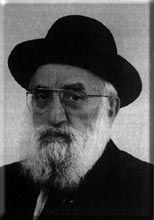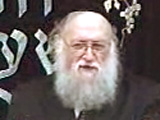Beit Midrash
- Torah Portion and Tanach
- Vayikra
- Tzav
The simple answer (actually, it’s not so simple!) is that there is so much happening beneath the surface of this story, that we absolutely must go back & hear it again. Like a book or movie with a special twist at the end, when you see or read it again, after you know the ending, you can appreciate it so much more. So it is with Megilat Esther.
Beneath the fairy-tale like facade is a serious sequence of events which impact upon the entire history of Am Yisrael. The backdrop is the re-building of the Bet HaMikdash after the Babylonian exile: Ordered by Cyrus, prohibited by Vashti (the granddaughter of Nebuchadnezer) & then renewed by Darius II, son of Esther & Achashverosh.
And there is a lot to consider about the lead actress in this elaborate Purim play:
We have 2 fast-days named for a person: Tzom Gedalya & Ta’anit Esther. Now, I understand the Gedalya tragedy; his brutal assassination, at the hands of a fellow Jew, nonetheless, brought about a final, bitter end to the Jewish community in Israel after the Temple’s destruction. But Esther?! Why should her name be associated with such a "down" day? While the fast she called for did precede her appeal to the king, it seems inappropriate, almost cruel that our heroine princess should forever be linked with such a sad event.
But the deeper truth is that Esther, for all of her beauty & stunning triumph over Haman, is a truly tragic figure. Orphaned at a young age, married to her much older uncle (with whom she had no children), she is coerced into an immodest beauty contest & then forced to live with a crude, Jew-hating tyrant. She understands that her situation is completely hopeless, & she desperately wants to end it. That is why, says the Gemara, she invites Haman to her party along with the king. Her plan was to "make eyes" at Haman, in the hope that Achashverosh, in a fit of jealous rage, will kill them both. This, she reasoned, would solve all her problems at once.
The trait of m’sirat nefesh, self-sacrifice, characterizes all our greatest heroines. Think Rivka, think Rachel, think Chana, think Rut. These women do what they have to do at great cost to themselves & their personal freedom & luxury. They win their eternal greatness at a high price.
Let us therefore, especially on Purim, pay homage to all those – our mothers, our wives, our soldiers come to mind - who give selflessly of themselves for our survival.
Parenting Never Ends
Rabbi Baruch Finkelstein | 6 Nisan 5772

Oil for Smoothing Over … Machloket
Rabbi Daniel Mann | 5774
Dress Appropriately!
The Wisdom of Rabbi Moshe Feinstein (16) - Tzav
Rabbi Baruch Finkelstein | 10 Nissan 5773























